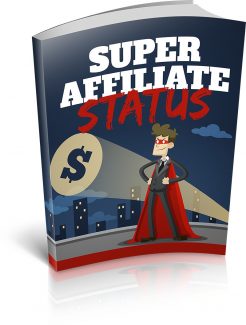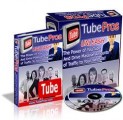 License Type: Master Resell Rights
License Type: Master Resell Rights  File Type: ZIP
File Type: ZIP
 SKU: 62374
SKU: 62374  Shipping: Online Download
Shipping: Online Download
Sample Content Preview
Making Sure You Plan For Success
Getting affiliate links is the easy part. Having a place to host them—now that's a little more involved. Having a place to host them where people will convert to buyers—that's even more work. You need to create a place where people can find you, where they'll want to come for information or assistance, and where they'll leave only to go complete the sale (even though they may not realize they are 'leaving'). Nevertheless, it can be done. But before you do anything, you need to structure a game plan. You need to write the plan that gives you all the potential for selling that you need.
But first, your plan
We won't go into detail about how and where to get an actual website—that's information you can find out easily enough and quite possibly already have. We'll throw out a couple of names like GoDaddy and HostGator, but also know that there are numerous hosts and website building templates ranging from the freebie that came with your ISP to being your own host. The only point you need to know is that anyone can build a workable, attractive website; and even if it's not the best looking on the block, if it's built so that traffic can come, they will.
What we want to focus on more is the structure of your website and/or websites. First off, we'll talk about the individual sites themselves.
If you will be promoting more than one product—and to make money the way the Big Dogs do you will need to—each related group of products should have their own dedicated site; out of that group, you will focus on your one most promising product most of the time. This site doesn't need to be huge, it can be just a few pages in total—say between ten and twenty, depending on the number of products you'll be selling; but it does need to incorporate all the elements that will gain you attention from the search engines, and thereby from visitors and buyers (targeted buyers with a need!).
Eventually you will want to build a master website that directs to each of your smaller, product-focused websites. This will be the website you use to "clean-up" the rest of the traffic generated by the keywords you haven't targeted—those generalities that aren't necessarily on the verge of buying anything. But that can come later. First, build the sites that will sell and start making money sooner.
So initially, your plan will look something like this:
• Target markets and keywords
• Choose specific affiliate products
• Build a website around a specific group of products
• Build more product-grouped websites for each affiliation
• Create a master website that captures traffic, then links traffic to smaller product-specific websites
Let's try to put this into perspective and give you a real-world example.
Okay; let's suppose that you are selling fitness-related products—a variety of sorts from body-building supplements to fifteen minute workout routines. The buyers who are looking for muscle-building supplements and powders could probably care less about your crunch-time workout videos. And you don't look like much of a reliable authority by just slapping up one ad next to the other. So you break down each of those product types into groups, and market five or six or so together on one website dedicated to each. So instead of having a catch-all website with fitness products, you have two dedicated websites that specifically serve the needs of the visitors ready to buy. You have
• A 10-20 page website selling body-building supplements, and
• A 10-20 page website selling workout videos for the too-busy-to-exercise crowd
Each site gives your buyers what they need—not what the other needs. After those sites are established and doing their thing, you can go back to that model of the fitness-products store, and create sections and virtual "aisles" that point to these smaller dedicated sites.
Now here we need to clarify a bit. This structure is one of the number-one things that Big Dog affiliates do, and small players do not.
What you will see many times is that small players collect a number of products, usually related, sometimes not even, and group them all on one website. They market their affiliate site as a sort of one stop-shopping storefront for everything. And they create so much confusion and competition amongst their own affiliate products that they never maximize the potential of the sales traffic that is coming in.
What the Big Dogs do in contrast is start by focusing on the small sites. They build up products in a way that clearly sells each one. They create choice for buyers by comparing their own like-products against each other, so that whatever product is chosen, the sale is theirs. Genius, yes?
Then they get the traffic going to and buying at those sites. Later on they'll build something more akin to the storefront, and link to these smaller sites when visitors click to learn more, just to clean up the rest of the lookers.
In the end, eventually anyway, both the Big Dogs and small-timers both end up with catch-all parent sites, but the Big Dogs have that added layer of sales protection that gives the customers what they need to make the sale, and also brings traffic in at both ends.
Now build it and they'll come
What you most need to know, then, is how to build that small-niche site.
To reiterate, the purpose of this site is to develop a very consumer-specific website that provides information and resources for the person who is looking to buy a product of this type. That's from the buyer's perspective. But you have search engines to please, too, so that content will need to do double-duty and also help you be found and ranked well for your target keywords and target audience.
There are two basic components to these small sites. Those are
1. Articles and buyer-centric information
2. Products
The pages of your website will be split amongst these two components. It probably should not be a straight 50/50 split. The division should be weighted more in favor of information than products. This will serve two purposes:
1. Information gives the buyer all the supporting information and details they need to decide to buy.
2. Information provides more feed for search engines so that buyers can find you.
However you decide to structure the actual website, it should have a simple division—information and products.
The product pages are simple. Create a page for each individual product that gives the specifics on the product (often the information provided by the affiliate). You need to give enough detail without overdoing it. Set up the product pages so that when the visitor performs the desired action—clicks a 'buy' button, or opts for a free sample or service—they are taken to the affiliate website, where they [hopefully] will order and purchase your product.
The informational pages require a little bit more work, but not too much. Each of these pages should host one piece of supporting information which helps your visitor decide to buy. It should be an article, product review, or product comparison. As you'll learn later, these are the things that will really draw the very specific and targeted ready to buy consumers that you want. This is the information that they are looking for just prior to purchase, and so it is the information that is most likely to net serious buyers, and not just curious visitors.
Back to our example, if we have five muscle-building supplements, we'll have five pages of products and perhaps ten pages with articles and comparisons. Use the articles to address the concerns of people in the market for supplements, and include topics important to them. They might be side-by side comparisons, reviews of specific powders, or topics such as "Five Tips for Building More Muscle."








